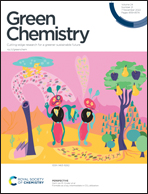Multi-level engineering of Saccharomyces cerevisiae for the synthesis and accumulation of retinal†
Abstract
Owing to the pharmaceutical value of retinal (vitamin A aldehyde), there is an increasing demand for the microbial synthesis of bio-based retinal. However, its microbial production is hindered by endogenous and redundant conversion of retinal to retinol and retinoic acid, which represents a major bottleneck for efficient retinal synthesis. In this study, we found that a combined inactivation of a functionally redundant subset of four alcohol dehydrogenases (Adh6, Adh7, Sfa1 and Gre2) and an aldehyde dehydrogenase (Hfd1) in Saccharomyces cerevisiae rendered the yeast with the ability to accumulate retinal. Stepwise optimization of β-carotene synthesis in the budding yeast harboring chromosomally integrated crtE/YB/I genes from Xanthophyllomyces dendrorhous and β-carotene 15,15′-monooxygenase (BCMO) from the marine bacterium 66A03 allowed us to produce 69.13 ± 5.82 mg L−1 retinal (>99% purity) in shake-flasks. Taken together, we have built a S. cerevisiae-based platform for retinal synthesis, which will pave the way for the future industrial development of bio-based retinal from renewable feedstocks.



 Please wait while we load your content...
Please wait while we load your content...